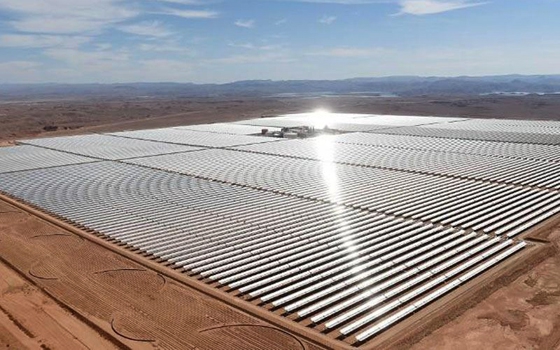A change in global markets has seen more than half of global annual investment in clean energy targeted at emerging markets as opposed to the developed world. The catalyst? A demand for power from those that need it most.
In sub-Saharan Africa, despite extraordinary progress in recent decades, more than 600 million people still have no access to electricity. Most rely on wood and charcoal for their domestic energy needs.
Yet the technology revolution sweeping the continent and the growth of the middle classes have given the population a voice that is demanding change. This is not confined to Africa. The same is happening in other emerging markets, from Asia to Latin America.
This issue is one of three energy priorities driving political agendas in both developed and developing countries. The so-called ‘Energy Trilemma’ is forcing governments to grapple with the challenge of balancing growing demand for accessible and affordable energy with their commitments to tackling climate change and ensuring energy security.
The balance between these three factors differs in each nation. But the evidence is clear that in emerging markets in particular renewable technologies can provide solutions that address all three demands.
The result has been the creation of an investment environment in emerging markets that is becoming increasingly attractive to foreign investors.
This abundance of goodwill and sentiment can go only so far, however. None of this can happen without firm political resolve.
Governments in emerging markets need to institutionalize policies and regulations that protect private sector investment and create the appropriate structures to enable independent power projects to be successful.
Morocco, for example, has set an impressive benchmark by demonstrating that a combination of vision and political will can be translated into success. Earlier this year, the Rabat government switched on the first phase of the world’s largest solar plant that will ultimately provide electricity to 1.1 million people when completed in 2018.
By 2020, Morocco intends to generate 42 percent of its energy from renewables, with one-third of that total coming from solar, wind and hydropower respectively.
Funding glut
Political will is only one of the necessary factors. What does this fundamental shift in geographic investment in renewables mean for the investment community?
Firstly, and critically for investors, the funding available for renewable energy projects in emerging markets is plentiful and growing.
From private equity and venture capital to development finance institutions and pension funds, the appetite from a diverse range of investors for these projects is undeniable. The lack of viable projects to finance as opposed to the financial resources is the bottleneck to success.
Secondly, the commercial case for investment in clean energy technology in these markets is clear. Compared to developed markets, such as those in Europe, we are seeing far fewer barriers to commerciality.
Renewables investments in Spain and Italy, to cite just two examples, require heavy subsidies. This translates to significant tariff reductions and limited economic viability of certain projects.
In comparison, emerging markets are likely to adopt unsubsidized policy models. These markets present renewables opportunities at, or even below, grid parity. This greatly reduces investment risk.
Thirdly, the path to commerciality is short. Renewable energy technologies, especially solar technologies such as solar PV, require short construction timelines. This minimizes operational risk and allows projects to monetize quickly.
For example, a 50MW solar PV plant that is able to provide power for some 200,000 homes can be up and running within six months of financial close.
Despite this positive investment environment for renewable technologies in emerging markets, specific challenges remain, as they do in every global jurisdiction.
Development finance carries risk. One of the biggest challenges in developing markets, such as sub-Saharan Africa, is limited grid infrastructure. As a result large-scale projects can take a long time to be delivered.
Starting small may be the way forward. By investing in smaller scale projects from 10-50MW that can be connected into existing infrastructure, investors ensure power can be delivered effectively and efficiently. Scalability can be built in to meet future demand.
Developers and investors in emerging markets are busy weaving the golden thread of energy into something of real substance. If successful, this will secure the energy future of millions for decades to come.
Reda El Chaar
Executive chairman of Access Power
This Is Africa













































































